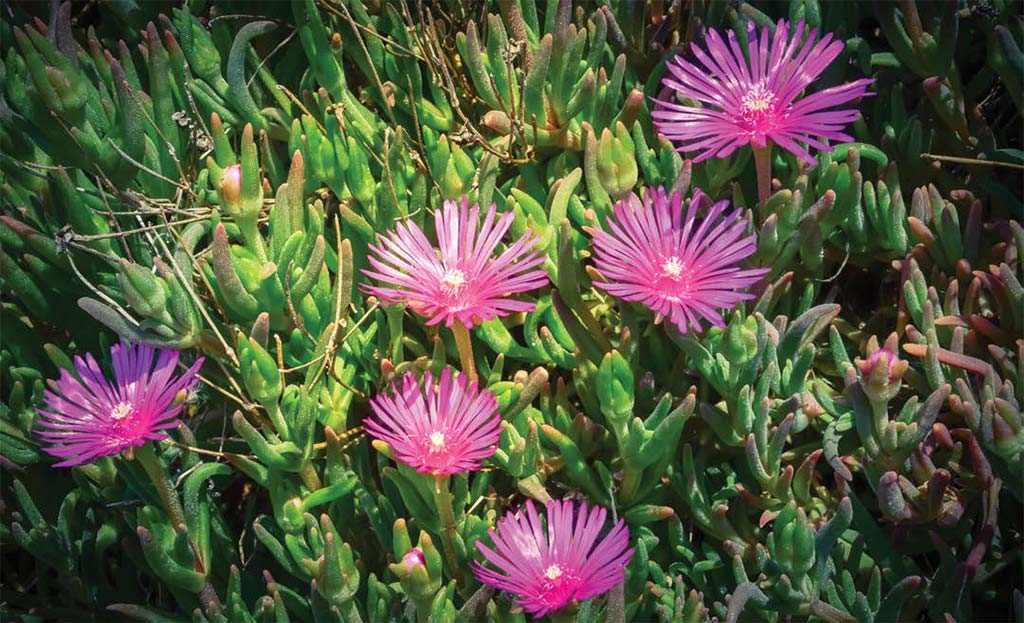The unusually named pigface (Carpobrotus glaucescens, or carpobrotus rossii), also called karkalla, sea fig or sea bananas, is a succulent groundcover found in most parts of temperate coastal Australia. Its flowing green leaves and bright pink flowers are hard to miss as you walk the sand dunes for your ocean swim. This edible Australian native bushfood can also be easily grown in your garden.
Pigface is a coastal variety of saltbush, a halophyte which means it can adapt to high saline soils or water. It does this by either excreting salt or absorbing a lot of water to keep a healthy balance. Every part of the pigface plant is edible, with the red fruit being described as tasting like salty strawberries or salty fig. The leaves can be used medicinally for burns or stings, plus eaten raw or cooked.
Description
Pigface is a spreading succulent with vibrant, fleshy green leaves 3–10 cm long and striking red or purple flowers. It can be found year-round covering large patches of coastal sand dunes. Not to be confused with Mesembryanthemum, a genus to which pigface used to belong, which has 25 species from Europe and South Africa, comes in a hugely variable range of colours and shapes and is what you might find for sale at a garden nursery.

